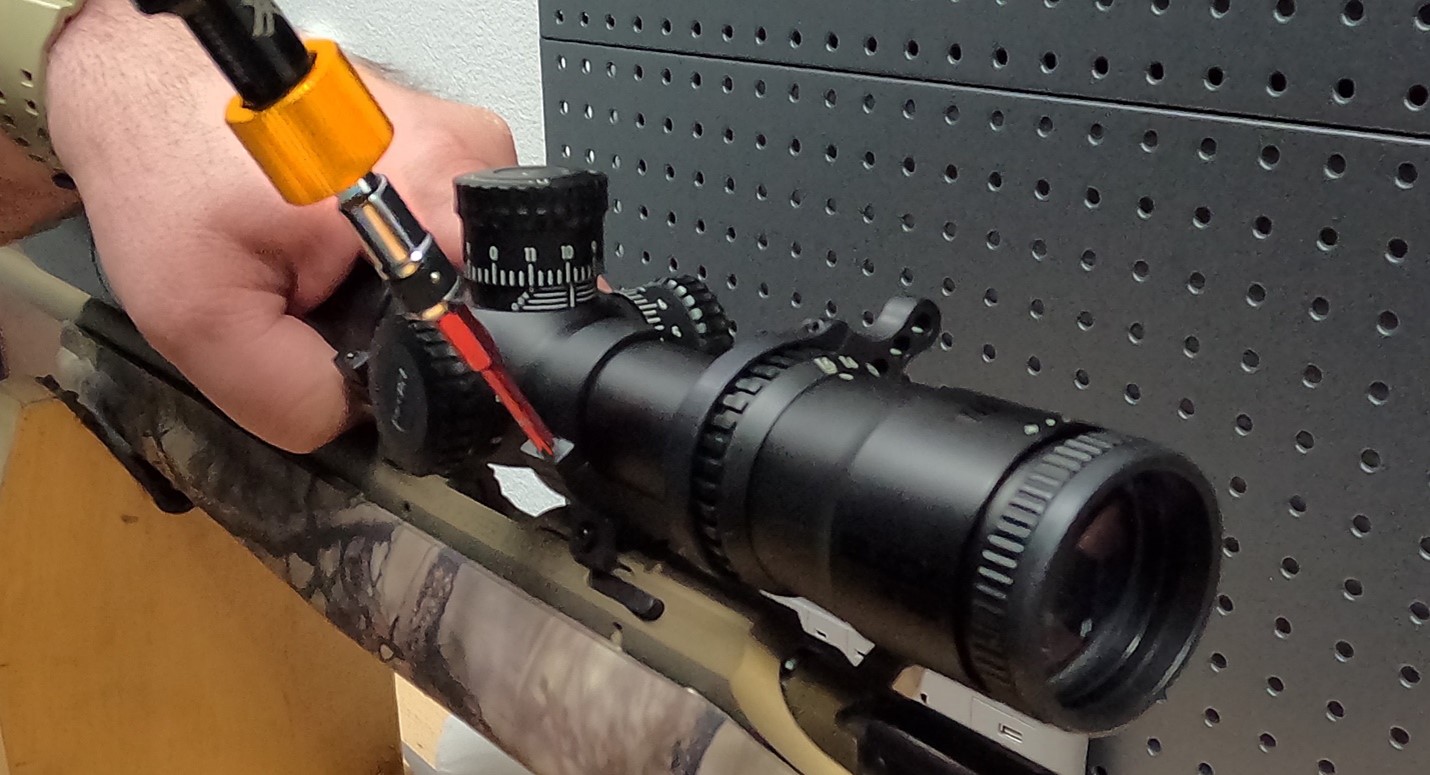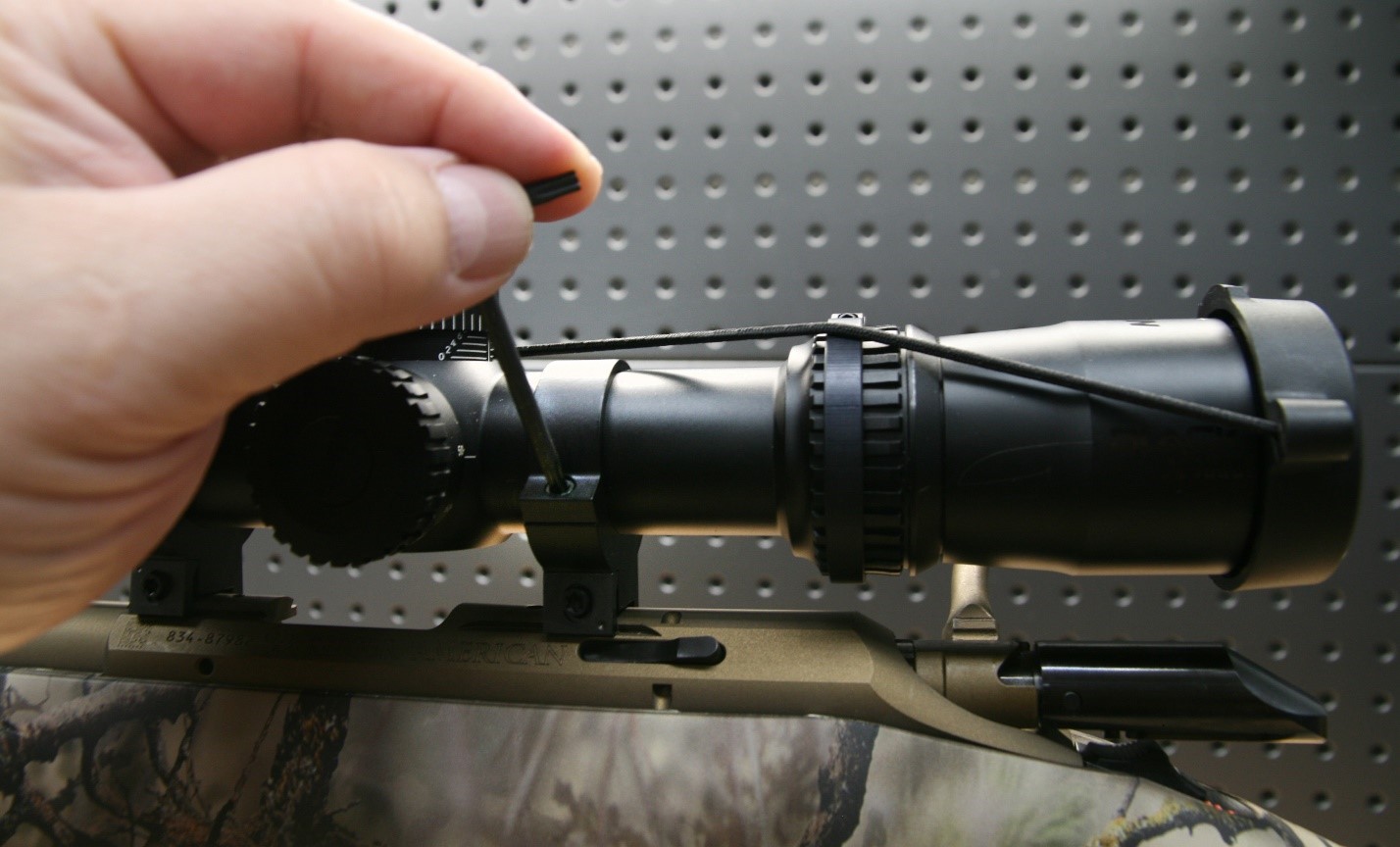Understanding Torque
Torque is, at its heart, a rotational equivalent of linear force. In a nutshell, it describes a twist around an axis and the related force around it.
Think about a wing nut bolt on an office chair or shelf system. At first, the nut practically spins itself with barely any friction. Eventually, it tightens up and it’s at that point you can feel the torque for yourself. Torque could be looked at as a measurement of how tight a screw is.
Torque is measured in inch-lbs. or feet-lbs. For scope mounts it is very important to measure in inch-lbs. NOT foot-lbs.
Why is Torque Important to Scope Rings?
If your rings are too loose your scope will slip in the rings with the shock of recoil, if bumped or from vibration. Remember your scope is a precision instrument and just a tiny shift can throw your point of impact off by inches even feet which could cost you a clean shot or cause a miss.
If the screws are too tight, they can damage your scope, or the screws can strip making them difficult to next to impossible to remove.
That’s why scope manufacturers have scope ring torque recommendations. 20-25 inch-pounds used to be the standard but now with lighter weight scopes with thinner tubes they vary with some as low as 15 inch-lbs. So always check your scope manufacturers torque specs.
Do not use any kind of thread locker on your ring screws.
Some people worry too much about their screws coming loose on their rings because they were using poor quality rings or maybe they heard a story about someone who missed a trophy buck only to discover their scope rings came loose. Rather than buying a set of quality rings they go for a quick fix and use thread locker. By doing this they are creating a new set of problems. Manufacturer’s toque specs are based on dry threads and putting anything wet on the screw will change the torque value and you may end up overtightening the screws damaging your scope. Using the wrong thread locker could make it next to impossible to remove the screw should you ever need to remove them.
Scope movement in the rings is due uneven or incorrect torque values. hard use without routine inspection or poor-quality rings. Warne makes high quality rings that if installed as per manufacturers specs you can trust them to hold tight and hold your scope in place shot after shot year after year. Keep in mind there are other variables like the kind of ammo being used and over all beating that the scope takes from recoil and use that can change a point of impact so you should still check your zero before heading off on a big hunt or competition.
Blue thread locker for the bases
Never ever use red thread locker on your base or rings. It is recommended to use blue thread locker on your scope base screws that attach to rifle unless you plan to remove your base. The reason for this is there is usually only 3-5 short screws attaching the base to the rifle unlike the rings that have longer screws and tension pulling from the other side gripping the scope. It is very unlikely that you will ever remove your scope base, but you might need to remove the scope from the rings if you desire a new scope or if you’re scope was damaged and needs work.
Check your firearm manufacture’s torque specs for attaching bases to firearm usually 25 inch-lbs. maximum for steel receiver and around 15 inch-lbs for aluminum. Always use specs from your firearm manufacturer for bases.
Torquing Scope Rings

Step 1. make sure the firearm is unloaded and put it in a rifle rest.
Step 2. using L-shaped hex key included with most new scope rings. Hold the short end, stick the long end in the screw and tighten the screws on the cap (If there are more than 2 screws on your ring tighten in a crisscross pattern) a little at a time until they start to get snug where you can still move your scope but it’s not loose. This is where you adjust your scope for eye relief and make sure its level.
Step 3. Using a torque made for gunsmithing (an auto mechanic torque wrench with the correct size hex socket can be used with extreme caution) set the torque wrench to 10-inch pounds. VERY IMPORTANT that you use inch pounds not foot pounds and use dry threads (no Loctite or thread locker of any sort). After tightening them all down to 10-inch pounds using a Criss cross pattern on each ring tighten to the scope manufactures torque values.
If you do not have a torque wrench you can do it by feel but you do risk over tightening or under tightening them. The best way to do it is getting each screw snug. Check out this video “ How to get even ring gap ”. Once they are snug grip the small end of the “L” shaped hex key and turn it till its tight to the point where you must put effort into turning it and it seems it can’t go anymore without hurting your fingers (crisscross pattern if more than 2 screws per ring). Then go over them again to double check. This is not as precise as using a torque wrench because some people have stronger fingers than others but typically doing it this way will put you between 15–20-inch pounds.

No matter your method, do not overlook torque this is why it is important to use quality made rings. There is quite a bit of engineering that goes into precision scope mounts. We engineer them for precise fit then we torture test them to ensure they will last a lifetime so we can back them with a lifetime warranty.
Warne has specialized in premium scope mounts for over 30 years. Be sure to check out our selection of Precision Scope Rings and our one-piece AR/MSR mounts.


